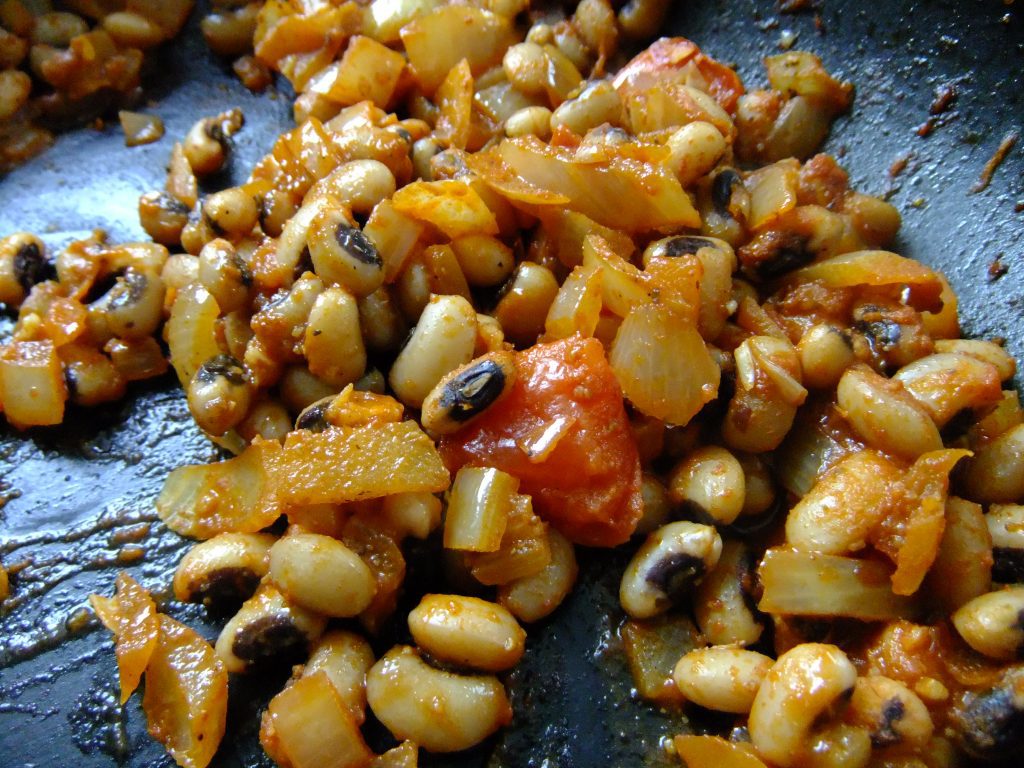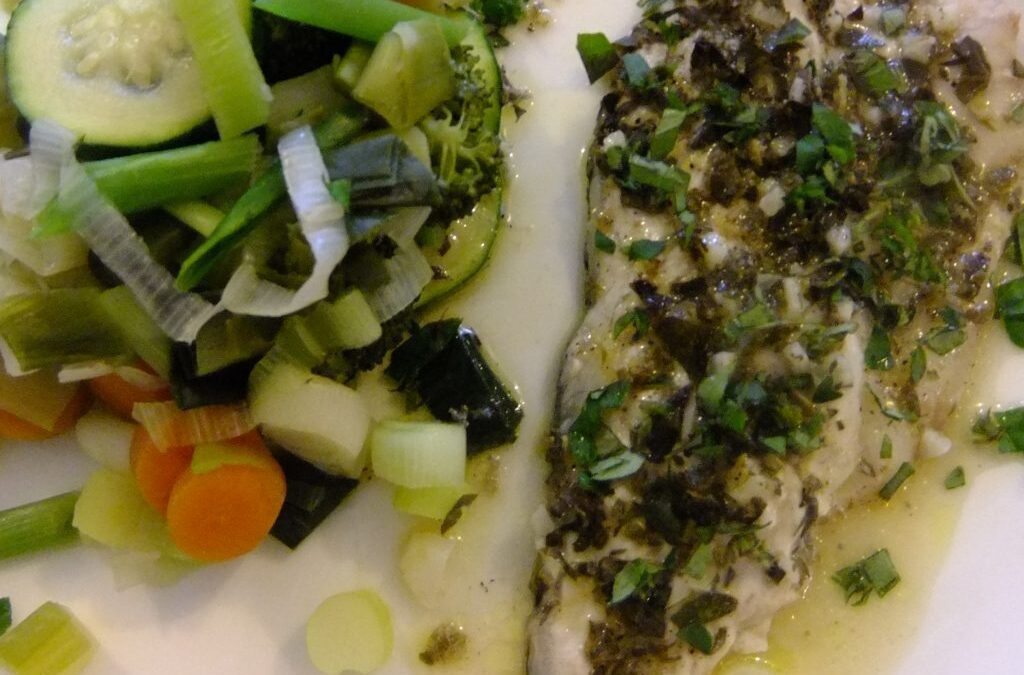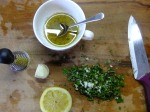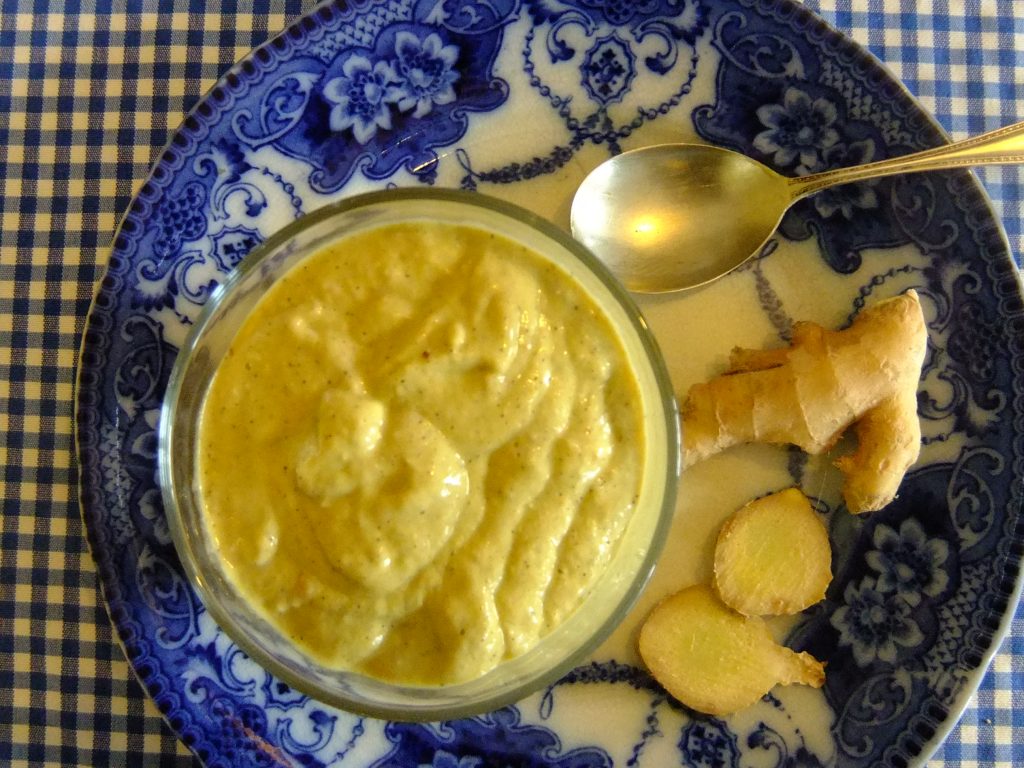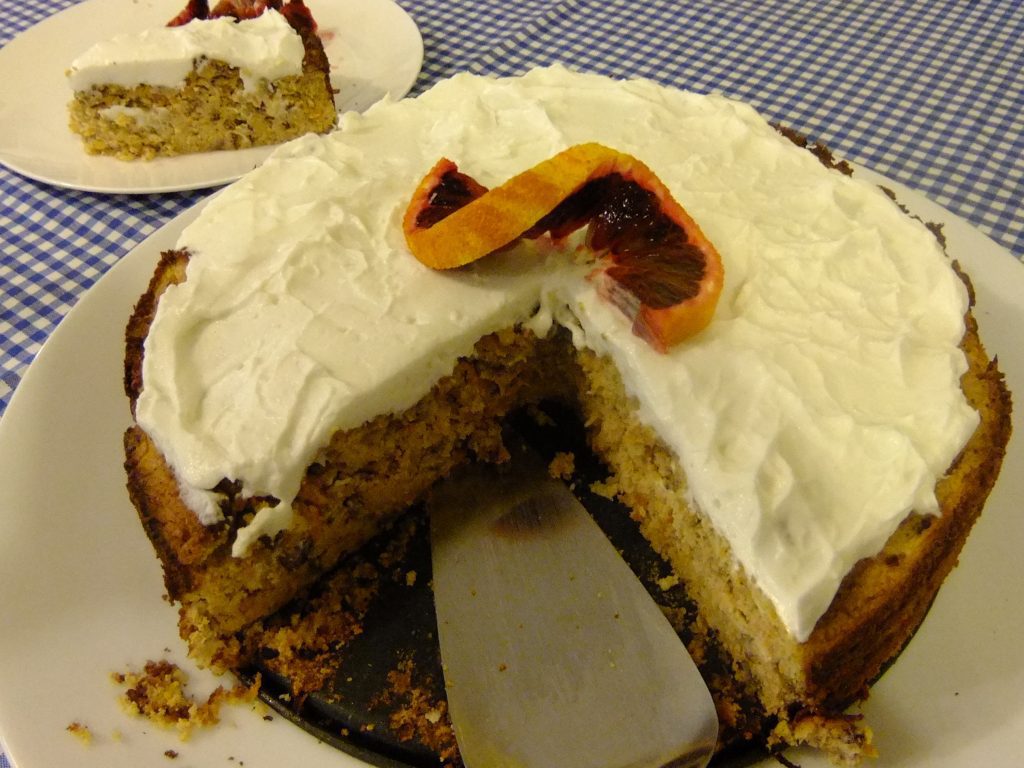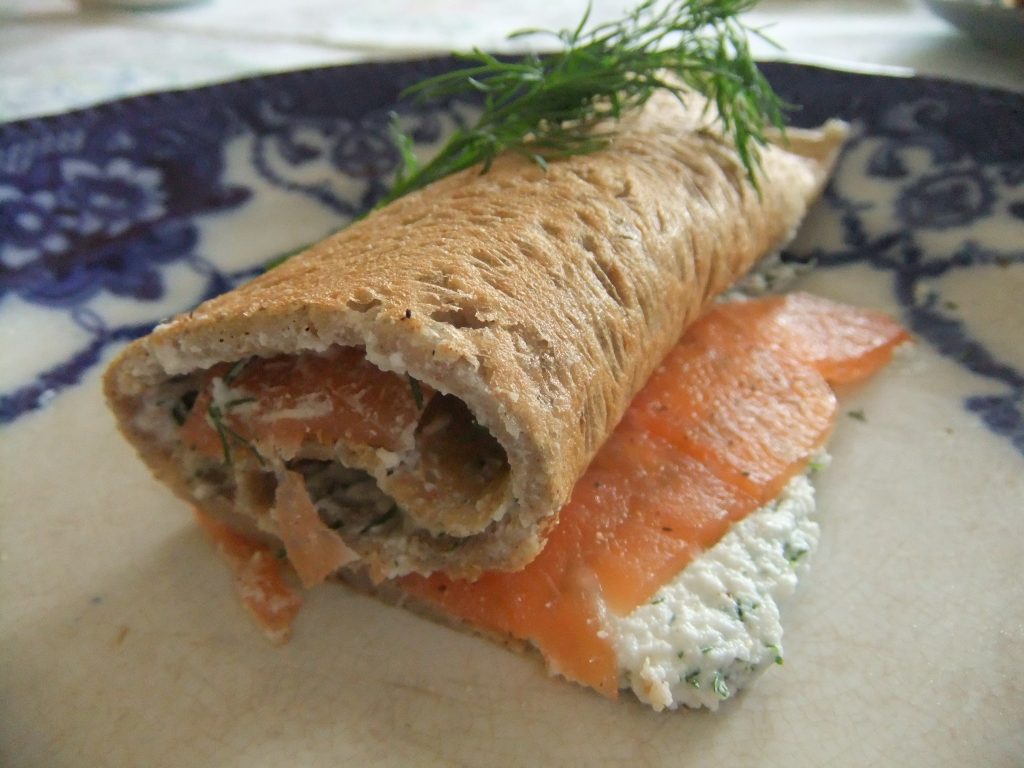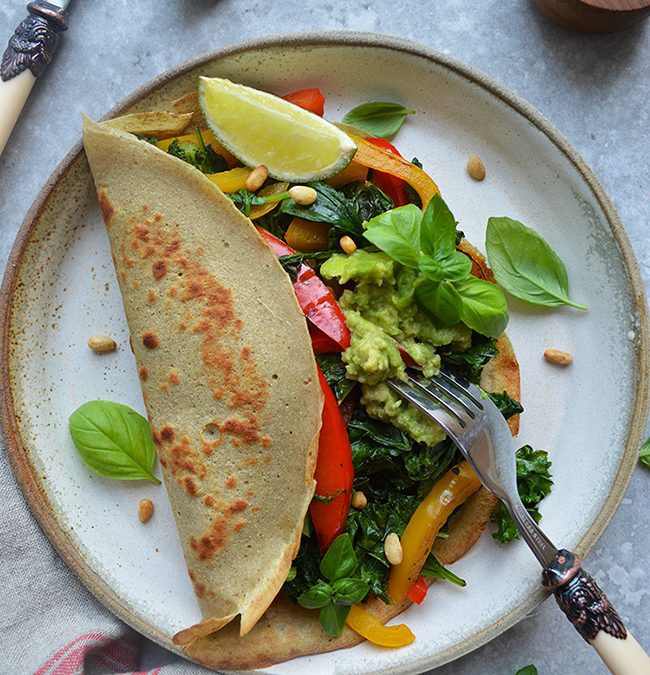
Jun 27, 2016 | Anna's Best Recipes, Main courses, Packed lunches
I got this from a newspaper. No idea who wrote the recipe but it’s delicious and so fast, and comforting. It has become a favorite and we often eat it with quinoa and a steamed green veggie for a filling dinner. I often don’t bother with the avocado and yoghurt and it’s still lovely. Also nice as a bean salad served cold, I find.
Bean mixture:
1 large onion, chopped
Extra virgin olive oil
A 400g can of any of these beans: black, black eyed, kidney or borlotti (or mugful/200g dried beans: soak overnight in clean water, drain, cover with boiling water and boil hard till tender – this gives you a larger quantity of beans in the finished dish but it still works)
1 dsp tomato puree
2 cloves garlic, chopped or crushed
1 tsp ground cumin
1 tsp paprika or smoked paprika
To serve:
Little gem lettuce leaves and the following which are optional:
A dollop of natural or Greek yoghurt (if you avoid dairy, use natural soya yoghurt)
Chopped avocado
Lime juice (or lemon juice)
A little Himalayan salt or Atlantic sea salt
- Steam-fry the onion in a dessertspoon of coconut oil and a spash of water. This means covering the pan with a lid or plate, letting the onions steam until translucent and softened).
Add the beans, tomato puree, garlic, cumin and smoked paprika. Simmer 5 minutes. - Spoon into little gem lettuce leaves along with a dollop of (dairy-free or dairy) yoghurt, some chopped avocado, and plenty of lime juice and a little Himalayan salt.
Alternative dinner idea:
Serve with quinoa and a steamed green e.g. broccoli, runner beans or peas.
Packed lunch idea
Bring the leftover bean filling, little gem lettuce leaves, a lime or lemon, and an avocado to work. Reheat the filling (or not), chop or mash the avocado and mix with lemon or lime juice and a little salt. Spoon the filling onto the lettuce leaves and enjoy the avocado mix on the side.
Why this is good for you
Onions and beans contain soluble fibre. This feeds beneficial bacteria in your gut, which are responsible for 80% of detoxification. And scientists used to think that your liver with it’s 5,000+ chemical reactions every day was the main organ of detox! This detox is really important for your skin, your energy and hormone balance – in fact every aspect of your health. Extra virgin olive oil, garlic and spices are anti-inflammatory and help suppress overgrowth of “bad” bacteria in your gut. This can have a dramatically improving effect on digestion and much more…

Oct 13, 2015 | Anna's Best Recipes, Breads, crackers, pancakes & wraps
I am having a craze for recipes that fit in with the specific carbohydrate diet (SCD). The SCD is a lifesaver for so many people with Crohn’s and colitis that I had to start including some of the recipes here and eating them at home sometimes. This bread is really lovely and very easy to make. Just tried it at the weekend with home-made baked beans for breakfast and a piece of fruit to follow. Naturally I also smothered it in my home-made buttery spread for bread but you could use normal butter or ghee (clarified butter). Wish I could say the recipe is my own, but I found it in the wonderful SC diet cookbook. I did reduce the (I thought) excessive amount of salt from the original recipe and it still tasted great. This bread is suitable for a grain-free ketogenic diet as well – AND IS TOTALLY DELICIOUS AND SATISFYING.
900g (2lb) loaf tin
2 large eggs (if they are tiny, you could use 4)
230ml (1 cup) home made kefir or home-made natural yoghurt (see SC diet website)
28g clarified butter or ghee or (if you are not dairy sensitive) normal butter, melted
½ level teaspoon sea salt or Himalayan salt
1 rounded teaspoon baking soda (“bread soda” is another name for this)
½ teaspoon freshly ground black or white pepper
385g almond flour (ground almonds are fine. The finer ground the better – I whizzed mine in the food processor for a bit before adding the other ingredients)
12g (1/4 cup) chopped chives (do use these, they give a fab flavour – if you don’t have any you could use the green parts of spring onions chopped up finely)
14g finely chopped, dry, sun-dried tomatoes (with no additives if you are on SC diet)
1. Preheat oven to 170C (fan oven) or 195C otherwise. Grease and bottom line a 900g (2lb) loaf tin with baking parchment.
2. Blend together all ingredients in a food processor then pour into the tin.
3. Bake in the oven for 45-55 mins until a knife inserted into the centre comes out clean.
4. The bread, once cool, should keep well in a self seal bag or airtight container in the fridge for at least 5 days.
Why this is better for you:
Some people need to follow a grain-free diet in order to stay well. This recipe is just the thing to satisfy the longing for bread. This bread would be brilliant for anybody needing a low carbohydrate diet (e.g. people with diabetes, or people following a ketogenic diet to manage cancer). Being baked, its naturally not quite as healthy as eating the nuts (almonds) raw. But what the hey, sometimes you just want bread. Because the bread is very low in carbohydrates (sugars) its a great substitute for the wheaten bread that can cause such huge dips in energy after lunch. And of course its low GI and studies show low GI eating helps skin and hair health too. You might wonder why I mention “dairy-free” when the recipe contains ghee/clarified butter – this is because when you clarify butter you remove the lactose (milk sugar) and casein (problematic milk protein) and so it becomes hypoallergenic. Great news for anyone who is dairy sensitive. If you have a true dairy allergy (throat swelling, anaphylactic shock) you will of course still want to steer clear of any contact with dairy products whatsoever, even during food preparation for others.

May 20, 2015 | Anna's Best Recipes, Main courses
This dish is inspired by the flavours of Greece – fresh white fish, lemons, garlic and oregano. I saw a prepack product and thought “wouldn’t it be nice to make the fresh version”. It only takes a few minutes to get in the oven and is bursting with flavour and freshness. We enjoyed it with steamed leeks, courgettes and carrots sprinkled with some extra virgin olive oil.
For two:

Lemon, garlic, oregano for fish
2 x 160g sea bream or sea bass fillets
1/2 cup (about 100ml) white wine (or 4 tbs water and 1 dsp lemon juice)
1 tbs extra virgin olive oil or (if you want dairy) a knob of butter
Zest of 1 small lemon (organic or scrubbed with soapy water and rinsed)
1 clove garlic, crushed or finely sliced/chopped
Handful fresh oregano (about 5 x 12cm sprigs), stalks removed (if you don’t have fresh oregano you could use fresh tarragon or 1 tbs of chopped thyme leaves)
Freshly ground black pepper
1. Preheat the oven to 200C
2. Lay the 2 pieces of fish skin side down in a small roasting tin or ovenproof dish. 3. Pour over the wine (or water with lemon juice), the olive oil or butter and sprinkle on the lemon zest and garlic and a few good grinds of black pepper.
4. Chop the oregano. Reserve half for later and sprinkle half over the fish.
5. Cover the dish with tinfoil and seal the edges. Or use a close-fitting lid. The idea is that the fish steams in the liquid and stays succulent, rather than roasting and drying out. Bake for 8-10 minutes until the fish is cooked through.
6. Serve sprinkled with the remaining chopped oregano.
Serve with:
Any green vegetable. We like steamed leeks and broccoli. And optionally some carrots or carrot mash.
Why this is great for you:
Oregano and garlic can help supercharge your health and vitality. They both act against overgrowths of disease-causing bacteria and yeasts in your gut. The bacteria that live in your gut outnumber the cells of your body 10 to one and they have a massive impact on mental and physical health. Not having enough good bacteria, or an overgrowth of bad is a major factor in skin conditions and digestive troubles. If you take antibiotics, eat food with glyphosate (herbicide) residues, or eat a high carbohydrate diet, your gut bacteria will not be all they should be. Garlic and oregano can help start to set things right. Garlic, oregano and lemons also contain anti-ageing, anti-inflammatory compounds that protect your brain and your joints and slow down the accumulation of wrinkles. Unprocessed white fish is a good source of high-quality protein. Protein is needed for helping us eliminate natural and man-made toxins. If you team the protein up with (more than half your plate) greens and multicoloured veg you have a winning formula for energy and vitality.

Apr 16, 2015 | Anna's Best Recipes, Breakfasts & smoothies
This breakfast is delicious but even more importantly is packed with anti-inflammatory, immune-supporting goodness that keeps you full for hours. It’s fresh and zingy but really filling. If you like your smoothie thinner, add more liquid. If you prefer it thicker add less liquid and eat from the glass with a spoon like I do – yum!
It also has protein which your body needs in order to make antibodies to ward off infections. See below for more details of how this smoothie helps your immune system.
For 1 hungry adult:
1 scoop/2 rounded dsp of Sun Warrior Warrior Blend protein powder or other protein powder of your choice (e.g. pea protein, sprouted rice protein, or for for a dairy option, Solgar Whey to Go Vanilla) If you don’t have protein powder, make sure to use more avocado and seeds to keep you fuller longer
200ml unsweetened milk of your choice: almond, hemp, coconut milk, home-made kefir, milk
1 small/medium pear, washed
2.5cm of peeled sliced fresh ginger (slice it across the grain to avoid long fibres in your brekkie!)
1 level tsp ground turmeric (or half a thumb of peeled fresh turmeric, sliced)
Rounded tbs ground seeds e.g. linseed or a blend (e.g. pumpkin, sesame, sunflower and linseed). If you don’t have seeds you could use nuts, either ground or soaked overnight
Optional: 1/4 ripe avocado (use more if you don’t have protein powder)
Optional: a teaspoon of lecithin granules (helps you digest fats and feeds your brain)
Optional (for extra sweetness): pure stevia drops, erythritol or xylitol to taste, or a little honey
1. Remove stalk from the pear, cut up the rest (seeds and all) and throw in the liquidiser.
2. Add the liquid and then other ingredients. Blitz for a minute until smooth. Enjoy.
Why this smoothie is good for you:
Turmeric, ginger and avocados contain the natural anti-inflammatories curcumin, gingerol and vitamin E. So if you want to get rid of annoying skin conditions or boost your digestive wellness these are fantastic things to add to your everyday eating.
Flax seeds and pears contain soluble fibre which feeds the beneficial bacteria that support your resistance to infections both viral and bacvterial. Ginger is anti-viral too. Ginger and turmeric selectively encourage growth of good bugs in your gut.
Because this breakfast is rich in protein, beneficial oils and low in sugars (from fruit) it helps regulate blood sugar to keep your energy, concentration and mood even throughout the morning. Like all meals, this shouldn’t be gulped down – you need to “chew” all your food to mix it with saliva and digest it properly. Avocados are rich in monounsaturated fatty acids and vitamin E, great for moisturising skin and body from within. Yoghurt and kefir provide friendly bacteria important for a healthy digestion, clear skin and stable mood. Fermenting makes the milk easily digested, removing the casein (dairy protein) that triggers food sensitivities in so many people. Lecithin granules help emulsify (digest) fats and are a great source of phospatidyl choline. Pho. choline is only found in egg yolks, lecithin and organ meats and are essential for memory.

Apr 1, 2015 | Anna's Best Recipes, Cakes, biscuits & bars, Desserts & drinks
I have to admit I was dubious about making this cake because it contains no grains. I couldn’t believe it could be as nice as the wheaty carrot cake I used to make before I learned I was coeliac. But this one is lovely and moist and not as fiddly to make. The icing is phenomenal whether you go for the dairy-free or the dairy-laden option. I’ve adapted the recipe slightly from the one on “Wheat Belly” by cardiologist William Davis. He writes about why humans are totally unsuited to eating gluten and how you can enhance your health by cutting grains. The original recipe uses double the sweetener for the cake, but I found that a bit sickly. If you (or your kids) have a massive sweet tooth though, feel free to double it…
For 10 generous servings:
Cake:
125g coconut flour
90g xylitol or erythritol
2 tbs grated orange zest*
1 rounded tbs ground flaxseeds
2 rounded tsp ground cinnamon
1 rounded tsp ground allspice
1 rounded tsp grated/ground nutmeg
1 rounded tsp gluten-free baking powder (this is usually free of toxic additives)
Pinch Himalayan salt/Atlantic sea salt
4 large eggs, organic if possible
105g coconut oil, gently melted
200ml natural soya yoghurt, natural yoghurt or kefir
100ml full fat coconut milk (tinned is fine)
2 tsp pure vanilla extract (not “essence” unless you are happy to eat gluten)
160g (2 cups) finely grated carrots
110g pecans, chopped (or use walnuts)
23-25cm circular or square springform baking tin
Electric cake mixer or whisk
Icing (vegan or standard cheese base):
1 tbs lemon juice or home made kefir
1 tbs xylitol/erythritol (or more, to taste, if you want it sweeter)
200g plain Coyo (dairy-free yoghurt) for dairy-free/paleo diets OR ricotta cheese if you want to eat dairy
Alternative kefir cheese icing (kefir is tolerated by most dairy-sensitive people):
200g kefir cheese (made by straining kefir through muslin/nut milk bag to remove the watery “whey”)
2 tbs xylitol
Optional: zest of a lemon
*If you don’t use organic oranges, there will be pesticide residues on the peel. So put your oranges into a litre of water, add 2 tbs vinegar and leave for at least 20 minutes before scrubbing well (to remove the chemicals). This trick also works for cleaning vegetables (leafy greens can just be soaked and washed off after).
1. Preheat oven to 170C (155C fan) and grease the baking tin with coconut oil.
2. To make the cake: combine the coconut flour, erythritol, xylitol, orange zest, ground flaxseed, cinnamon, allspice, nutmeg, baking powder and salt in a large bowl and mix by hand.
3. Beat together the eggs, gently melted (just hand hot) coconut oil, yoghurt or kefir, coconut milk and vanilla in a medium bowl. Pour the egg mixture into the coconut flour mixture. Using an electric mixer, beat until thoroughly mixed. Stir in the carrots and pecans by hand. Pour the mixture into the baking tin.
4. Bake for around 1 hour checking after 45 mins. When a toothpick/skewer inserted into the cake comes out clean it’s done. You want the cake to remain moist. Much better slightly undercooked than over, I promise!
5. To make the icing: combine the Coyo or ricotta with the lemon juice and xylitol in a bowl and beat until smooth. If you’re making the kefir cheese based icing omit the lemon juice and optionally add the zest of a lemon.
6. Spread the icing over the top of the cooled cake.
Why this cake is better for you:
As you probably know any food that’s cooked above 100c generates toxic by-products (though less so if you don’t use sugar or polyunsaturated oils). That’s why a raw or just gently cooked diet (nothing above 100c) helps keep you younger longer, lowers inflammation and generally helps your body. That said, who doesn’t occasionally want something like a cake? This one is ideal as it’s grain free and protein rich. This means it doesn’t cause the fluctuations in blood sugar that fuel inflammation and can trigger skin issues, fatigue or dips in brain function. Coconut, unlike most oils, is still good for you even when it’s been heated. Roll on full-fat coconut milk! The low fat stuff is filled with emulsifiers and lacks the good stuff. Xylitol is what’s called a sugar alcohol and is 1.6 times as sweet as sugar but with half the calories. It’s not absorbed by your body so it doesn’t affect blood sugar levels. It’s generally deemed to be safe. If you have a very sensitive bowel, go cautiously with xylitol because it can be hard for some people to deal with in large quantities. Guideline: just a slice, and not the whole cake in one sitting!
If you use Coyo yoghurt (or kefir) in the icing, you will also be getting a boost of friendly bacteria in this delicious cake to boost vitality and wellbeing.

Feb 16, 2015 | Anna's Best Recipes, Breads, crackers, pancakes & wraps, Desserts & drinks

Gluten-free pancakes with apple and vanilla yoghurt
These are my “traditional” but gluten-free pancakes and I love them for an occasional treat. They come out pretty similar to traditional wheaty pancakes and we think they are just as nice. I plan to eat these for dessert on Pancake Tuesday with freshly stewed cooking apple (sweetened with pure stevia or xylitol) and a large dollop of Greek yoghurt, natural yoghurt or Coyo coconut yoghurt. Coyo sometimes needs to be thinned thinned with a little non dairy milk when its extremely thick. Of course there’s always the more traditional option to eat them with lashings of lemon juice and a sprinkle of xylitol. Delicious!
For best results make the batter between 2 hours and 2 days before and store in the fridge until ready to use.
110g plus 1 tbs brown rice flour, organic if possible
35g soya flour
½ level tsp Atlantic sea salt or Himalayan (pink) salt
2 eggs
1 tbs virgin macadamia oil or light olive oil
250ml dairy or non-dairy milk of your choice (additive-free unsweetened almond or coconut milk are particularly good)
Virgin coconut oil for cooking
1. Combine all the ingredients and whisk thoroughly with an egg beater or electric mixer or in a blender. the batter should flow like double cream. If it is too thick or thin, adjust with either rice flour or water. Store in the fridge until ready to use.
2. Heat a frying pan over a medium-high heat. too low a temperature will produce tough crepes, too high will burn them before they are cooked. Add a knob of coconut oil (about the size of the top part of your thumb) to the pan before cooking each crepe.
3. Pour the batter (about an eight per crepe) into the hot frying pan, tilting the pan to distribute batter evenly and thinly. Pour out any excess.
4. Cook until the top appears dry, about 1 minute. Lift with edge of a heatproof spatula and if the bottom is golden, easy the whole crepe up with the spatula and turn. cook about 1 minute more. Crepes can be stacked and kept warm in a low oven.
Why these are better for you:
The soya flour and eggs in these is high in protein, so you are less likely to have a blood sugar rush and crash after these, even if you eat them on their own. Erratic blood sugar plays a massive part in skin problems, accelerated ageing process, stress and digestive issues.
Unfermented soya products like soya flour (and soya milk) are not an especially healthy option to eat every day because they bind (stick to) essential minerals, making it hard for your body to digest them. That’s why I recommend these pancakes for occasional treats rather than every day. In contrast to soya flour and soya milk, fermented soya products are beneficial and can help reduce the hormonal imbalances that lead to breast and prostate issues. Examples of fermented soya products are miso, tempeh and soya yoghurt. So best keep soya flour and soya milk for occasional treats. Coconut oil is fantastic for your brain, your skin and even your digestive system. Unlike many oils, it is not made harmful by normal domestic cooking heat.

Jan 9, 2015 | Anna's Best Recipes, Sides, starters, soups & snacks
This is a delicious bright green soup and contains protein from the peas. It is a meal in itself and just the thing for a wintery Irish January day while you recover from the festive season splurge. It takes about 20 minutes to make and it freezes well. Dried herbs won’t really cut it in this soup, it just won’t taste great. I got the original recipe from Rose Elliot’s “Gourmet Vegetarian Cooking” but adapted it to use better-for-you oils and fats.
For 4:
15g butter or ghee (clarified butter, suitable for those with dairy intolerance), or if you don’t have either of these, 1 tbs of extra virgin olive oil
1 large onion, chopped
900g frozen peas (petits pois are the nicest)
1½ litre vegetable stock (make by boiling up chopped carrots, onions, cabbage or other green veg stalks, a leek and a bouquet garni) or use Kallo veg stock cubes/Marigold bouillon
A generous handful of fresh thyme sprigs
Freshly ground black pepper
2 tbs chopped fresh mint
To serve: extra virgin olive oil or natural yoghurt
1. Melt the butter in a large sauce pan and add the onion, sweat on a low heat, covered, until soft and translucent.
2. Wash your thyme, then find an elastic band or a piece of string and tie it in a bunch, this saves you spending ages fishing out stray twigs from the soup later. Set aside.
3. Add the peas to the saucepan and cook for 2-3 mins, stirring often. Pour in the stock/water, add the thyme, bring to the boil then cover and simmer for a few mins until the peas are done.
4. Find the bunch of thyme sprigs and roughly (with a spoon) separate the leaves (which you want) from the twigs (which you don’t). Leave the leaves in the soup and throw away the twigs.
5. Add the chopped fresh mint and process till smooth.
Serve with:
A drizzle of extra virgin olive oil (about a teaspoon) or a blob of natural yoghurt on the top. For dairy-free diets, avoid yoghurt.
Variations:
If you want to increase the variety of vegetables in this soup you can add 1 large leek at the same time as the onion.
Why this is good for you:
Peas are a great source of vegetable protein so this is a good sustaining soup and a perfectly balanced meal even on its own. The protein and the fats will keep you full for ages. Like all intensely green vegetables, peas are also rich in magnesium. You need magnesium for stress management, sleep, detox and even weight loss. This soup avoids harmful refined oils (most cooking oils). Refined oils are found in shop confectionery, biscuits and cakes, processed foods and all cooking oils except cold-pressed or extra virgin oils. Heating virgin cold pressed nuts/seed oils makes them harmful. Olive oil can be gently heated, and virgin coconut oil/ghee/butter are safe for cooking at higher temperatures. Marigold, Vecon or Kallo are better quality stock cubes than most. Thyme has powerful antioxidant anti-inflammatory properties which slow ageing and tune up the health of your digestive system. Mint helps calm and soothe your whole digestive system.

Nov 27, 2014 | Anna's Best Recipes, Cook-in sauces, Main courses, Recipes by category
This is a real crowd-pleaser that an Italian lady taught me to make when I was au-pairing in Rome. Rather then being fried, the meatballs are actually cooked in the tomato sauce. You really need lean meat for this otherwise you’ll have a lot of fat floating on the serface. Its up to you (and incidentally saturated fat is not the demon we were led to believe – much scientific evidence now to prove it).
If you would like to reduce the quantity of meat in the recipe, substitute cooked puy lentils for some of the meat. Raw meatballs freeze well too – just thaw thoroughly before cooking in tomato sauce.
For 5-6 big eaters
For the meatballs:
350g lean beef mince, organic if possible
350g lean lamb mince (or use extra beef mince if you prefer)
2 tbs freshly grated parmesan (if avoiding dairy, use 100% wholemeal gluten-free breadcrumbs instead of the cheese. If you eat gluten, normal brown crumbs are OK)
1 heaped tsp fresh thyme leaves
2 cloves of garlic, crushed
A few good grinds of black pepper
1 organic egg, beaten
A pinch of himalayan or Atlantic sea salt
For the sauce:
1 litre passata (sieved tomatoes)
1 onion, peeled and halved.
1 dsp extra virgin olive oil
Small bunch fresh basil, rinsed, if you have it.
1. In a bowl combine all the meatball ingredients and mix well – the quickest way to do this is with your hands.
2. Shape into balls about ¾” in diameter and place in a single layer on a plate in the fridge to solidify for at least ½ hour if possible.
3. To make the tomato sauce combine the passata, the peeled halved onion and olive oil in a wide-bottomed saucepan or deep frying pan, bring to the boil, then simmer until the onion is translucent – usually about 20 minutes. This sauce can be made up to 2 days in advance if you wish.
4. To cook the meatballs, bring the tomato sauce up to the boil in your wide bottomed saucepan or frying pan, then gently slide the meatballs in so they form a single layer. Do not stir (or you will break up the meatballs), just shake gently if necessary to distribute the meatballs in a single layer.
5. Cook on a medium heat for around 20 minutes until the meatballs are cooked through.
6. Remove the stalks from the basil, tear up roughly and add to the pan. Serve in bowls.
Serve with:
A large salad of green leaves and radicchio, cucumber and thinly sliced red onions
Optional extra (if you don’t want weight loss). Choose one:
A slice of gluten-free wholemeal bread or (if you eat gluten) some 100% wholemeal sourdough bread
2-3 baby boiled potatoes per person
Why this is good for you:
Cooking meat at low temperature in the sauce avoids the production of the harmful oxidation products. Oxidation by products from charring food cause free radical damage, linked to digestive and skin problems, inflammation and premature ageing. Tomato sauce is very rich in lycopene, a potent anti ageing, anti-inflammatory antioxidant. Red meat is a good source of iron so for many people it’s useful to eat once or twice a week.

Aug 23, 2013 | Anna's Best Recipes, Breads, crackers, pancakes & wraps, Breakfasts & smoothies, Main courses
Ate these last Sunday for a late and leisurely breakfast. If you have ever successfully made ordinary pancakes, these will be a doddle for you. Buckwheat galettes are a traditional pancake made in Brittany and eaten with savory fillings. They are naturally gluten-free. If you want, you can store them in the fridge for 1 day, or freeze them for up to one month. When freezing, separate them with greaseproof or baking paper and store them in a self-seal bag to prevent drying out. To serve made-in-advance galettes hot, add one at a time to a dry frying pan, when the first side is hot, flip over. This recipe makes 4 large galettes. to make this a balanced lunch or dinner, simply add a large salad or steamed green vegetables drizzled with olive oil.
Buckwheat pancake with ricotta, dill & smoked salmon
For 2 piggy eaters (or 4 normal appetites!)
100g buckwheat flour (for unusual ingredients see larder section)
1 large egg, organic if possible
300ml/ ½ pint liquid – use 150ml/ ¼ pint each water and milk (rice milk, cows milk or soya milk or oat milk – NB oat milk may contain gluten) or use all water. See larder for further info.
A little virgin macadamia oil, coconut oil, or, if you can’t get these, some extra virgin olive oil
Freshly ground black pepper
100g smoked salmon, ideally wild or organic
1 small tub (150-200gg) buffalo or cow ricotta cheese (if you can’t get this, use low-fat cottage cheese, mashed or blitzed in a processor until smooth-ish in texture)
2 tbs chopped dill herb (a small bunch should be enough to yield this quantity)
1. Sift the flour into a large bowl.
2. Make a well in the middle and break in the egg and add a few grinds of black pepper.
3. Using a whisk, gradually add the liquid, whisking well, until the mix has the consistency of thin cream. Depending on the size of the egg, you may need a little more or less fluid than the quantity specified. Like all grain-based foods, buckwheat becomes more digestible if you leave it overnight to soak before cooking.
4. Heat a flat-based frying pan or griddle until hot, wiping a little oil over it with kitchen paper while it is still quite cool (macadamia oil, coconut oil, or extra virgin olive oil are fine)
5. When hot, pour a quarter of the mixture into the centre of the pan, tilting the pan to spread the mixture. Cook for a minute or two, until the pancake, begins to bubble around the edge. Flip it over with a spatula and continue cooking for another minute or two.
6. When the galette is cooked, turn it on to a plate, keep warm in the oven (covered with another plate to keep it all moist) and continue making more and piling them up.
9. To serve, mix the ricotta in a bowl with 2 tbs chopped fresh dill. Cut the salmon into strips and layout on a plate. Give each person a galette and allow them to add the cheese and fish and roll or fold before eating. Yum!
Variations:
Heat up some leftover chickpea curry, bean-based vegetarian curry, chili, or a casserole to use as a filling for these galettes.
Why this is good for you:
Buckwheat flour is a grain that is naturally gluten-free and is packed with nutrition. It is a valuable source of rutin, a bioflavonoid with anti-inflammatory and immune-balancing properties. Rutin, like many other bioflavonoids, helps support the integrity of your skin, making it stronger and less prone to allergic reactions. Ricotta is a cheese made from the watery whey skimmed off after making cheese. Because it is low in casein (the main milk protein that people can be intolerant to), its less likely to be a problem for those with a mild dairy intolerance. Smoked salmon is a high-quality protein that’s packed with essential omega 3 fats. The high protein content of this meal will keep you fuller longer.

Aug 23, 2013 | Anna's Best Recipes, Breads, crackers, pancakes & wraps, Packed lunches
These are nutrient-packed versions of the sandwich wraps that are so fashionable now. They are as simple as a normal pancake to make and are inspired by the delicious buckwheat galettes you get in traditional restaurants in Brittany. This recipe comes from Ian Marber’s book, The Food Doctor everyday diet, which has lots of lovely recipes. Make them in advance and store them in the fridge for a day or two, or freeze for up to a month. When freezing, separate them with greaseproof or baking paper and store them in a self-seal bag to prevent drying out. Like all other grains, buckwheat is much more digestible if you soak before using (ie. make the batter a few hours before you need it or the previous day and store it at room temperature for an extra light result).
Basic sandwich wrap
Makes 8 small wraps
See “larder & shopping” to source new-to-you ingredients
100g buckwheat flour
1 large egg, organic if possible
300ml liquid – use 150ml/ ¼ pint each water and milk (rice milk, cows milk, or soya milk or oat milk – NB oat milk may contain gluten) or use all water. See larder for further info.
A little virgin macadamia oil, coconut oil or, if you can’t get these, some extra virgin olive oil
Black pepper
Baking/greaseproof paper (or tin foil) and (if you want to freeze the wraps) a self-seal bag
1. Sift the flour into a large bowl, then make a well in the middle and break in the egg and add a few grinds of black pepper.
3. Using a whisk, gradually add the liquid, whisking well, until the mix has the consistency of thin cream. Depending on the size of the egg, you may need a little more or less fluid than the quantity specified. Like all grain-based foods, the buckwheat flour becomes even more digestible if you leave the batter overnight to soak before cooking the wraps.
4. Heat a flat-based frying pan or griddle until hot, wiping a little oil over it with kitchen paper while it is still quite cool (macadamia oil, coconut oil or extra virgin olive oil are fine)
5. When hot, pour an eighth of the mixture into the centre of the pan, tilting the pan to spread the mixture. We use a ladle for this as it’s easier to measure out an eighth rather than trying to estimate when in mid-pour. Cook for a minute or two, until the pancake, begins to bubble around the edge. Flip it over with a spatula and continue cooking for another minute or two. Meanwhile, line a plate with greaseproof/baking paper/tinfoil
6. When the wrap is cooked, turn it on to the lined plate. Put another piece of paper/foil on top and continue cooking wraps and piling them up, separated by pieces of paper or foil to stop them from sticking to each other. When all the wraps are cooked and cooled, cover with either another plate and store in the fridge for up to 2 days or else place in a self-seal bag and freeze, to thaw and use as required.
Serving ideas:
Just spread a wrap with one of these combinations, roll up and wrap in a paper sandwich bag secured with an elastic band for a great packed lunch. If you can, add some additional salad in a box on the side.
- Plenty of humous, some de-seeded, chopped tomatoes and/or cucumber, and baby spinach/rocket/lettuce leaves
- Lean chicken, chopped red onion and cucumber, and avocado mashed with lemon/lime juice and some black pepper
- Ricotta or low-fat cottage cheese mashed with crushed garlic or chopped dill, black pepper, and strips of smoked salmon or mackerel
- Grilled Toulouse sausage (Toulouse sausage is usually gluten- and nitrite-free but check with your butcher) or Taifun grill herb sausages (contain gluten) or thickly sliced grilled Taifun basil tofu (gluten-free) PLUS salad veggies (eg rocket, chopped peppers, cherry tomatoes) and a little home-made mayo, aioli, non-sugar tomato ketchup or extra virgin olive oil to moisten.
Again, please see my larder section for all unusual ingredients.
Why this is good for you:
Buckwheat flour is a grain that is naturally gluten-free and is packed with nutrition. It is a valuable source of rutin, a bioflavonoid with anti-inflammatory and immune-modulating properties. Rutin, like many other bioflavonoids, helps support the integrity of your skin, making it stronger and less prone to allergic reactions. Bioflavonoids help build collagen, which is also vital for bone strength. So if you want strong healthy bones and wrinkle-free skin…Fresh raw vegetables are also a source of bioflavonoids.
As regards the fillings, protein (humous, ricotta, vegan sausage, basil tofu, Toulouse sausage, and smoked salmon) delays digestion, giving you a slow-burn, long-lasting energy for hours to follow.

